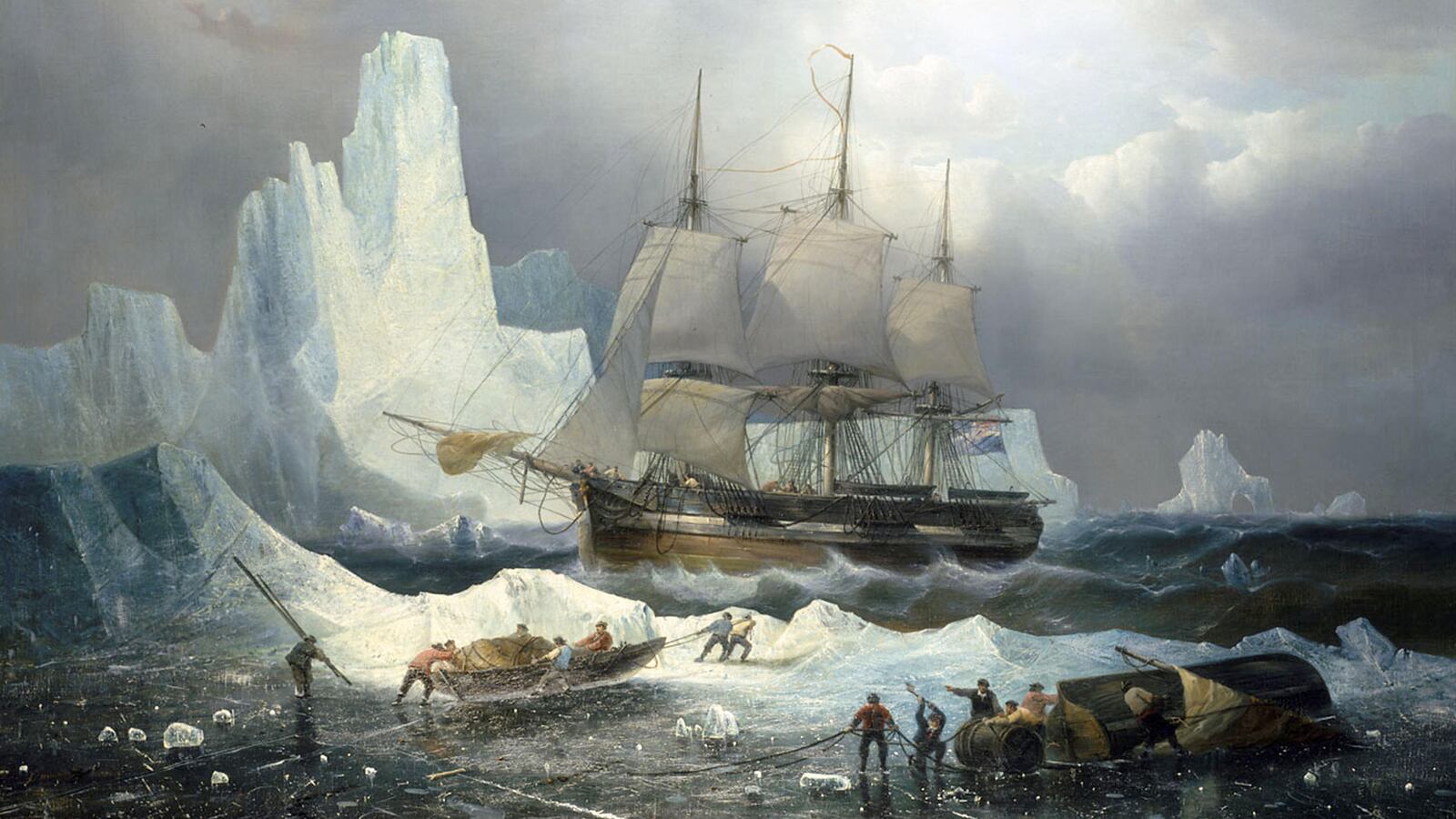Even in the dead of winter, the Arctic wind can be as kind as it is cruel.
One moment, it’s an icy fist trying to squeeze the final breath from your lungs. The next, it’s a giving hand that sustains life.
The Arctic’s wild mood swings rattled me with a March gale that hammered Ulukhaktok, a hamlet of around 400 people on the western shore of Victoria Island, high in Canada’s western Arctic.
The howling three-day storm, followed by the pure silence of a sunny winter’s day almost 300 miles above the Arctic Circle, was the sort scientists look to for symptoms of a rapidly warming northern climate.
Powerful storms aren’t new to Ulukhaktok. But this one had a surprising impact.
For years, multi-year sea ice—so thick that it survives each summer to grow stronger through the next winter—has been disappearing. The younger, thinner ice replacing it is easy prey for fierce winds.
Just 21 percent of Arctic sea ice now survives the summer melt. But 32 years ago, multi-year ice made up 45 percent of the total cover, the National Oceanic and Atmospheric Administration said in December in its annual Arctic report card.
This century sea ice has been disappearing at a pace not seen in some 1,500 years, and the “Arctic shows no sign of returning to reliably frozen region of recent past decades,” NOAA concluded ominously.
Evidence is mounting for scientists who believe climate change is destabilizing the jet stream, which funnels a high-altitude air current counterclockwise around the pole, making it wavier.
Deep detours from the jet stream’s polar circuit pull frigid air far south, which in recent days sent temperatures plummeting to record lows across the U.S. That got climate skeptics, including President Donald Trump, crowing louder.
Each u-turn of the jet stream north channels warm, moist air high into the Arctic, fueling the feedback loop that threatens to speed up warming that is already blamed for droughts, more intense wildfires and rising sea levels in various parts of the world.
Inuit oral history is an important piece of the puzzle experts are hurrying to piece together in a crucial effort to understand the long-term impacts of Arctic climate change.
Elders stories of storms past, periods of famine, disrupted wildlife migrations and other elements of traditional knowledge can help scientists see trends better in a region with huge gaps in scientific study.
Shifting weather patterns are making it harder for land animals like muskox and caribou to survive the winter near Ulukhatok, hunter Jerry Akoaksian told me. The animals are an essential part of the Inuit food supply.
“Nowadays, finding game like that is very difficult because when the freeze-up starts, it’s drizzle, freezing rain, and all that accumulates on the ground. And when that becomes a thin layer of ice, muskox, caribou—animals like that—have a harder time of finding food.
“So I think they’re slowly leaving this area,” he added with a shrug. “But time will tell.”
Combined with data recorded in the logbooks of 19th century European expeditions searching for a Northwest Passage through the Arctic Archipelago, history makes one thing very clear: The Arctic climate is prone to sudden shifts.
Even toward the end of the Little Ice Age in the middle of the 19th century, the mercurial north could fool experienced explorers.
Captain James Fitzjames, who was in charge of magnetic observations aboard Sir John Franklin’s flagship HMS Erebus, was optimistic she and HMS Terror would be the first to complete the passage. He sensed the historic breakthrough wasn’t far off because locals in Greenland described the weather as the warmest in memory.
They “believe it to be one of the mildest seasons and earliest summers ever known, and that the ice is clear away from this to Lancaster Sound,” Fitzjames wrote in his last letters home from Greenland, with a warning to be wary of 19th century fake news.
“Keep this to yourself,” the captain told the Coninghams, his adoptive family, “for Sir John is naturally very anxious that people in England should not be too sanguine about the season. Besides, the papers would have all sorts of stories, not true. I do believe we have a good chance of getting through this year, if it is to be done at all; but I hope we shall not, as I want to have a winter for magnetic observations.”
Fitzjames made a common mistake: He underestimated the Arctic’s capriciousness. By the next winter, the weather had turned fiercely cold, so severe that Inuit oral history recalls the period as one of hunger and deprivation in a desperate search for wildlife to eat.
Erebus and Terror sailed straight into an ice trap off the northwest tip of King William Island. The ships were abandoned to the sea ice, at least for a time, and all 129 men aboard perished. It is a mystery that still captivates almost 170 years later.
The well-preserved wrecks of the massive Royal Navy bomb ships were finally discovered in 2014 and 2016, largely thanks to Inuit traditional knowledge that had been ignored for decades.
Marine archeologists now doing the slow, meticulous work of exploring the wrecks have their eyes on an intact seaman’s chest sitting amid heavy timbers that were scattered by crushing sea ice over the generations.
It would be an ideal place to store ships’ logbooks, perhaps sealed in wax, by men who thought forward to the future and wanted the legacy of their epic struggle against the Arctic to live long after their painful deaths.
If divers find logbooks there, or anywhere else on the two ships, they might provide invaluable clues to climate scientists trying to figure out the Arctic’s wild mood swings, with the hope of better understanding what looms on the horizon for us.





